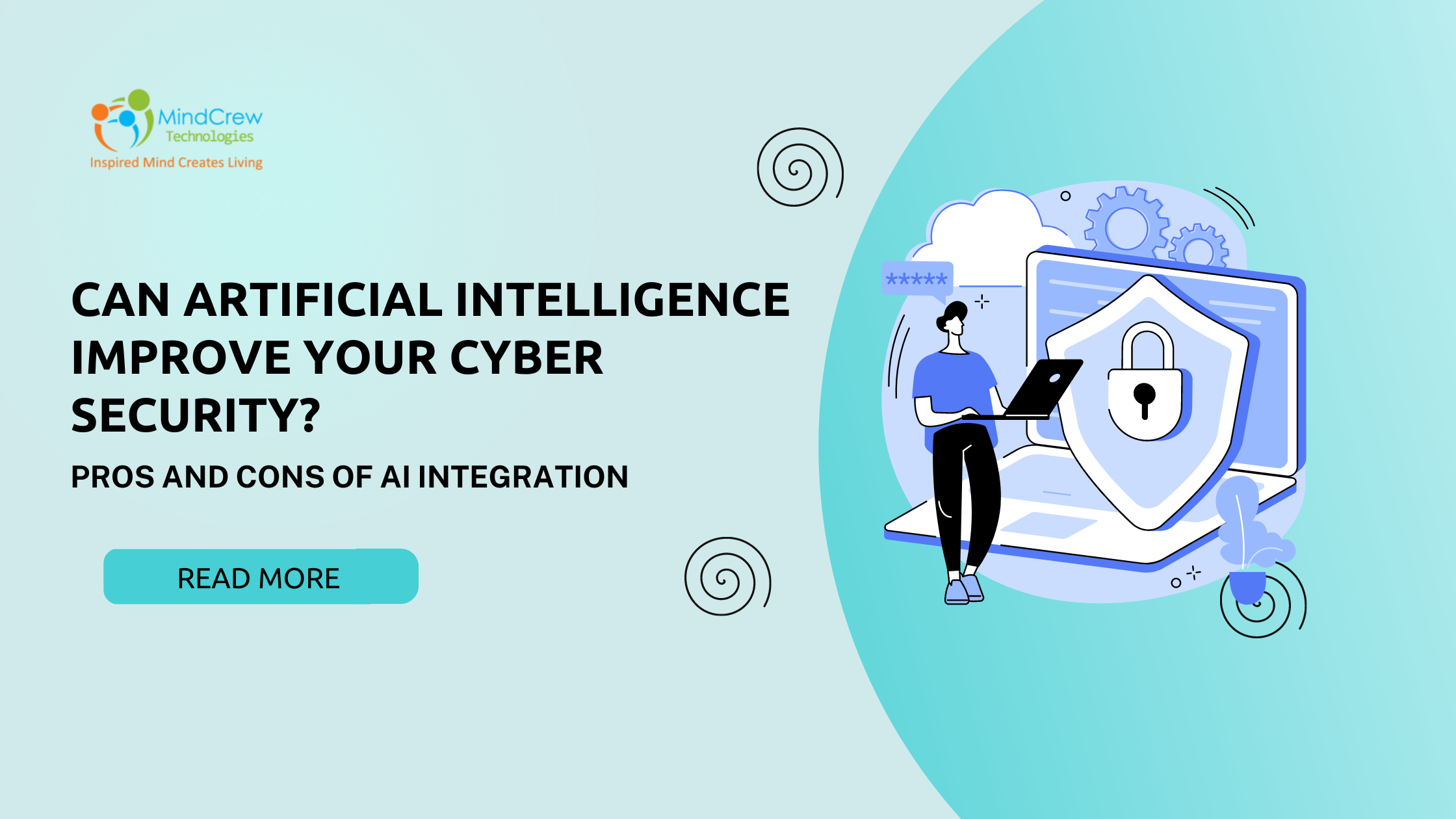Can Artificial Intelligence Improve Your Cyber Security? Pros and Cons of AI Integration
In today’s rapidly evolving digital landscape, cyber threats are becoming increasingly sophisticated. Organizations of all sizes are seeking advanced solutions to bolster their defenses against these threats. Artificial Intelligence (AI) has emerged as a powerful tool in this quest for enhanced cyber security. But how exactly can AI improve your cyber security, and what are the potential benefits and drawbacks of integrating AI into your security infrastructure? This comprehensive guide will explore the pros and cons of AI integration in cyber security to help you understand its role and make informed decisions for your organization.
What is AI in Cyber Security?
Artificial Intelligence, in the context of cyber security, refers to the use of machine learning (ML) algorithms, neural networks, and other AI technologies to detect, prevent, and respond to cyber threats. AI systems are designed to analyze large volumes of data, identify patterns, and make decisions based on this analysis. In cyber security, AI can help automate threat detection, enhance incident response, and provide deeper insights into potential vulnerabilities.
The Pros of AI Integration in Cyber Security
1. Enhanced Threat Detection
One of the most significant advantages of AI in cyber security is its ability to improve threat detection. Traditional security systems often rely on predefined rules and signatures to identify threats, which can be ineffective against new or unknown attacks. AI-powered systems, however, use machine learning algorithms to analyze patterns and behaviors, enabling them to detect anomalies that may indicate a cyber attack.
For example, AI can analyze network traffic to identify unusual patterns or deviations from normal behavior. This helps in detecting zero-day exploits and other novel threats that traditional systems might miss. By continuously learning from new data, AI systems can adapt to evolving threat landscapes and provide more accurate and timely threat detection.
2. Automated Incident Response
AI can significantly enhance incident response by automating many of the tasks involved in managing and mitigating cyber threats. This automation can lead to faster response times and reduced reliance on human intervention. AI-driven systems can automatically analyze the nature of an attack, determine its severity, and take predefined actions to contain and mitigate the threat.
For example, if an AI system detects a potential data breach, it can automatically isolate affected systems, block malicious traffic, and alert security teams. This reduces the time it takes to respond to incidents and minimizes the potential damage caused by cyber attacks. Automation also frees up security professionals to focus on more complex tasks and strategic planning.
3. Improved Accuracy and Efficiency
AI systems can analyze vast amounts of data more quickly and accurately than human analysts. This increased efficiency allows for faster identification of threats and reduces the likelihood of false positives. AI algorithms can process and correlate data from multiple sources, providing a more comprehensive view of the security landscape.
For instance, AI can integrate data from various security tools, such as firewalls, intrusion detection systems, and endpoint protection solutions, to create a unified threat intelligence picture. This holistic view helps security teams make more informed decisions and prioritize their response efforts based on the most critical threats.
4. Predictive Capabilities
AI’s predictive capabilities can provide valuable insights into potential future threats and vulnerabilities. By analyzing historical data and identifying trends, AI systems can forecast emerging threats and recommend proactive measures to mitigate them. This predictive analysis helps organizations stay ahead of cyber attackers and strengthen their defenses before an attack occurs.
For example, AI can analyze past attack patterns to predict potential future attack vectors or identify vulnerabilities that might be exploited in the future. This proactive approach allows organizations to address weaknesses before they are exploited, reducing the risk of successful attacks.
5. Enhanced User Authentication
AI can enhance user authentication processes by incorporating biometric and behavioral analysis. Traditional authentication methods, such as passwords, can be easily compromised or stolen. AI-powered systems can use biometric data (e.g., fingerprints, facial recognition) and behavioral patterns (e.g., typing rhythm, mouse movements) to verify user identities more securely.
For instance, AI can analyze a user’s typing speed and patterns to detect anomalies that might indicate fraudulent activity. This additional layer of security helps prevent unauthorized access and reduces the risk of credential theft.
The Cons of AI Integration in Cyber Security
1. High Costs and Complexity
Integrating AI into cyber security can be costly and complex. Implementing AI-driven solutions often requires significant investment in technology, infrastructure, and skilled personnel. Additionally, AI systems need to be properly configured and maintained, which can add to the overall cost.
For smaller organizations or those with limited budgets, the expense of deploying AI technologies might be prohibitive. Furthermore, the complexity of AI systems can require specialized expertise to manage and operate effectively. This can lead to additional costs associated with hiring or training staff to handle AI-driven security solutions.
2. Risk of False Positives and Negatives
While AI can improve accuracy in threat detection, it is not infallible. AI systems can produce false positives (incorrectly identifying benign activity as a threat) or false negatives (failing to detect actual threats). False positives can lead to unnecessary alerts and disruption, while false negatives can result in missed threats and potential breaches.
The effectiveness of AI in reducing false positives and negatives depends on the quality of the algorithms and the data used for training. Ensuring that AI systems are properly tuned and continuously updated is crucial to minimizing these risks.
3. Dependence on Data Quality
AI systems rely on high-quality data for training and operation. If the data used to train an AI model is incomplete, outdated, or biased, the performance of the AI system can be compromised. Poor data quality can lead to inaccurate threat detection and ineffective security measures.
Organizations need to ensure that their AI systems are fed with accurate and relevant data to achieve optimal performance. This requires ongoing data management and validation efforts, which can be resource-intensive.
4. Potential for Adversarial Attacks
AI systems themselves can become targets for cyber attacks. Adversarial attacks involve manipulating the input data fed into an AI system to trick it into making incorrect decisions. For example, attackers might alter network traffic patterns to evade detection by an AI-powered security system.
Organizations need to be aware of the potential vulnerabilities in their AI systems and implement measures to protect against adversarial attacks. This includes regularly testing and updating AI models to ensure their robustness and resilience against manipulation.
5. Ethical and Privacy Concerns
The use of AI in cyber security raises ethical and privacy concerns, particularly related to data collection and surveillance. AI systems often require access to sensitive data to function effectively, which can raise issues regarding user privacy and data protection.
Organizations need to balance the benefits of AI with the need to protect user privacy and comply with regulatory requirements. Transparent data practices and robust privacy policies are essential to address these concerns and maintain trust with users.
Conclusion
Artificial Intelligence has the potential to significantly enhance cyber security by improving threat detection, automating incident response, and providing predictive capabilities. However, it also comes with challenges, including high costs, potential for false positives and negatives, and ethical concerns.
As organizations consider integrating AI into their cyber security strategies, it is crucial to weigh the pros and cons carefully. Implementing AI solutions requires a thoughtful approach, including investing in high-quality data, ensuring the robustness of AI models, and addressing ethical considerations. By understanding these factors, organizations can harness the power of AI to strengthen their cyber defenses and stay ahead of emerging threats.
In the ever-evolving world of cyber security, AI offers a promising avenue for improving defenses and mitigating risks. As technology continues to advance, the role of AI in cyber security will likely become even more critical, making it essential for organizations to stay informed and prepared for the future.







